UNESCO World Heritage Sites in Greece: Where to Find Them
UNESCO world heritage sites in Greece? There are several.
Considering the long, tumultuous history of the country, that may come as no surprise. It is also worth noting that one particular site, the Athens Acropolis, almost became one of the seven new world wonders!
UNESCO World Heritage Sites in Greece
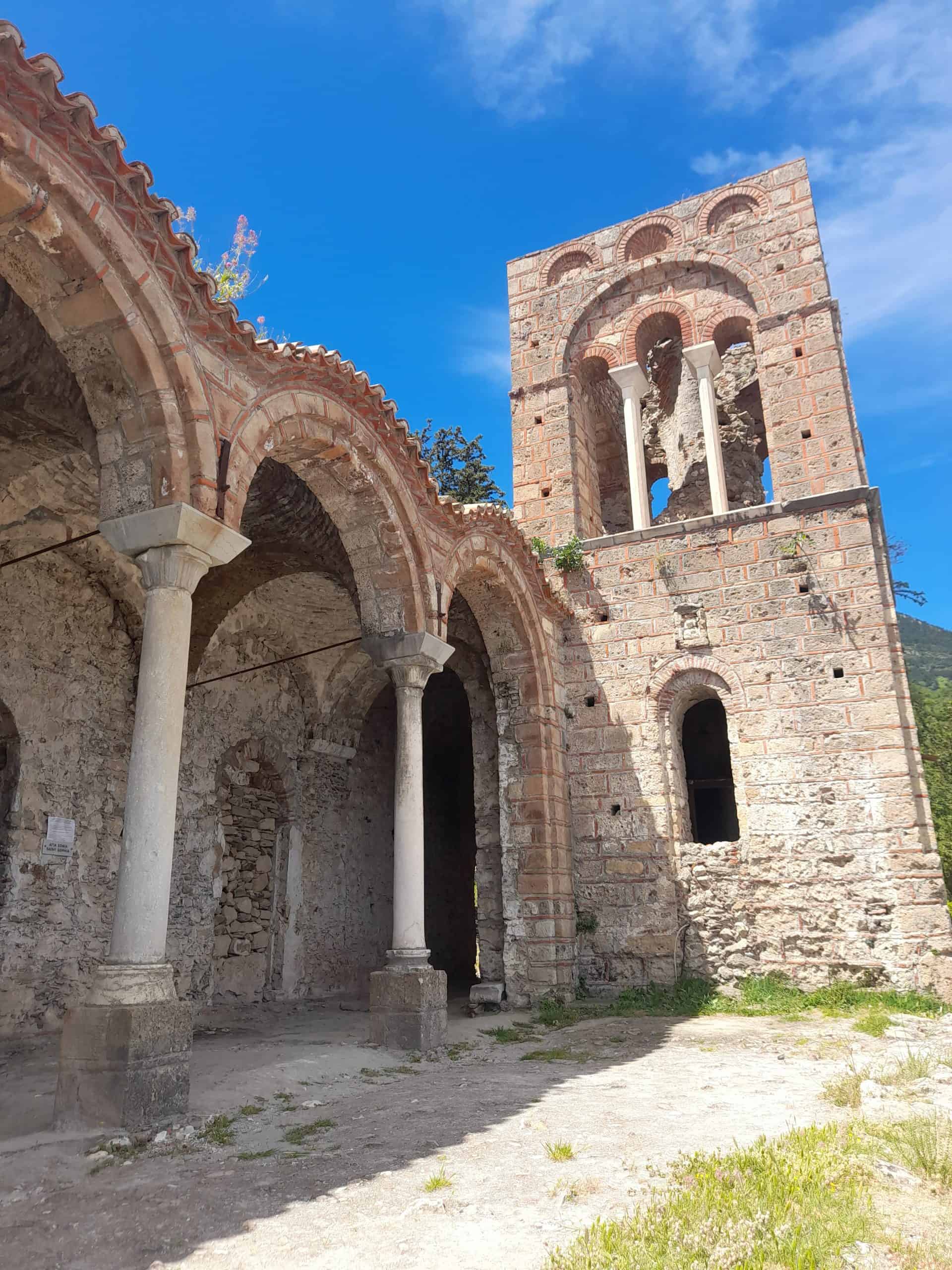
There are 18 UNESCO world heritage sites in Greece. Of these, 16 have been recognised by UNESCO for their cultural significance.
Meanwhile, the two Monastic communities of Meteora and Athos have been recognised for both their natural and cultural significance. You could very well plan a Greece travel itinerary based on hopping from one UNESCO site to another.
Greece UNESCO sites are not an exhaustive list of the only interesting/historic sites in the city. But they are places that give an excellent glimpse of the ancient civilizations that once occupied these lands.
Temple of Apollo Epicurius at Bassae
The Temple of Apollo Epicurius at Bassae was the first place in Greece to obtain UNESCO protected status. It is a grand, colonnaded temple situated on a hilltop that boasts spectacular views of the Arkania mountains around it.
It was constructed between 420-400BC and was dedicated to Apollo Epicurius, God of the sun and healing. The temple is interesting because it boasts a mix of Doric, Ionic, and Corinthian architectural styles.
The Archeological Site at Delphi
The Archeological site at Delphi is one of the most popular day trips from Athens. It received UNESCO world heritage status in 1987.
The site is of significant importance in both Greek mythology and history. Legend has it that Zeus sent two eagles from the ends of the universe to find the centre of the world.
They flew in opposite directions and met at Delphi. Thus, the city was born.
Delphi was developed in the 8th century BC in dedication to the Greek God Apollo. This was also the home of the Pythian Games.
This was the second most important sporting competition in Greece after the Olympics. Today, Delphi remains an expansive, well-preserved, and interesting historic site.
Don’t miss the nearby Delphi archaeological museum which displays a chronological history of the region along with some interesting artifacts. A settlement has grown around ancient Delphi today and boasts several excellent hotels for an overnight stay.
The Acropolis of Athens
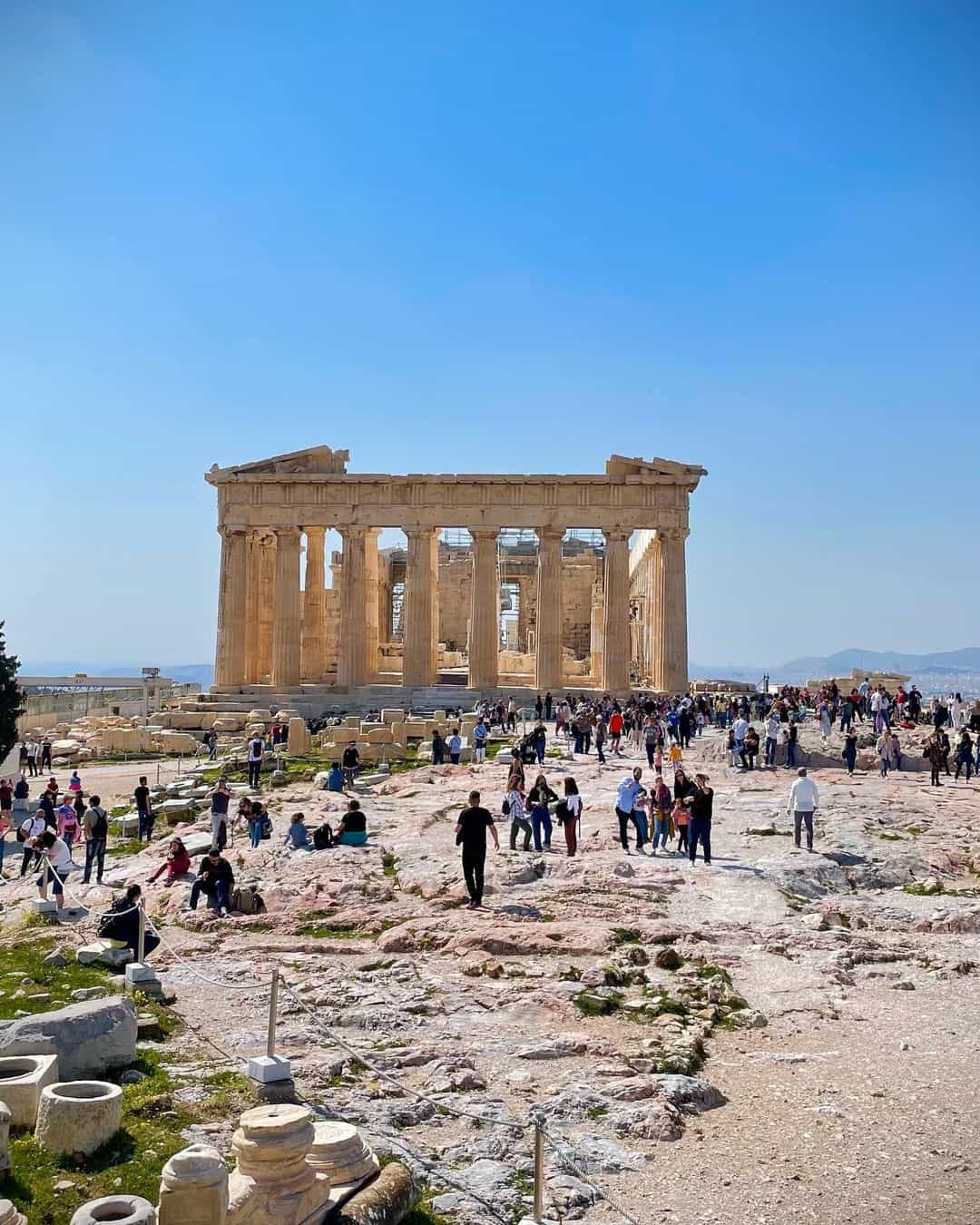
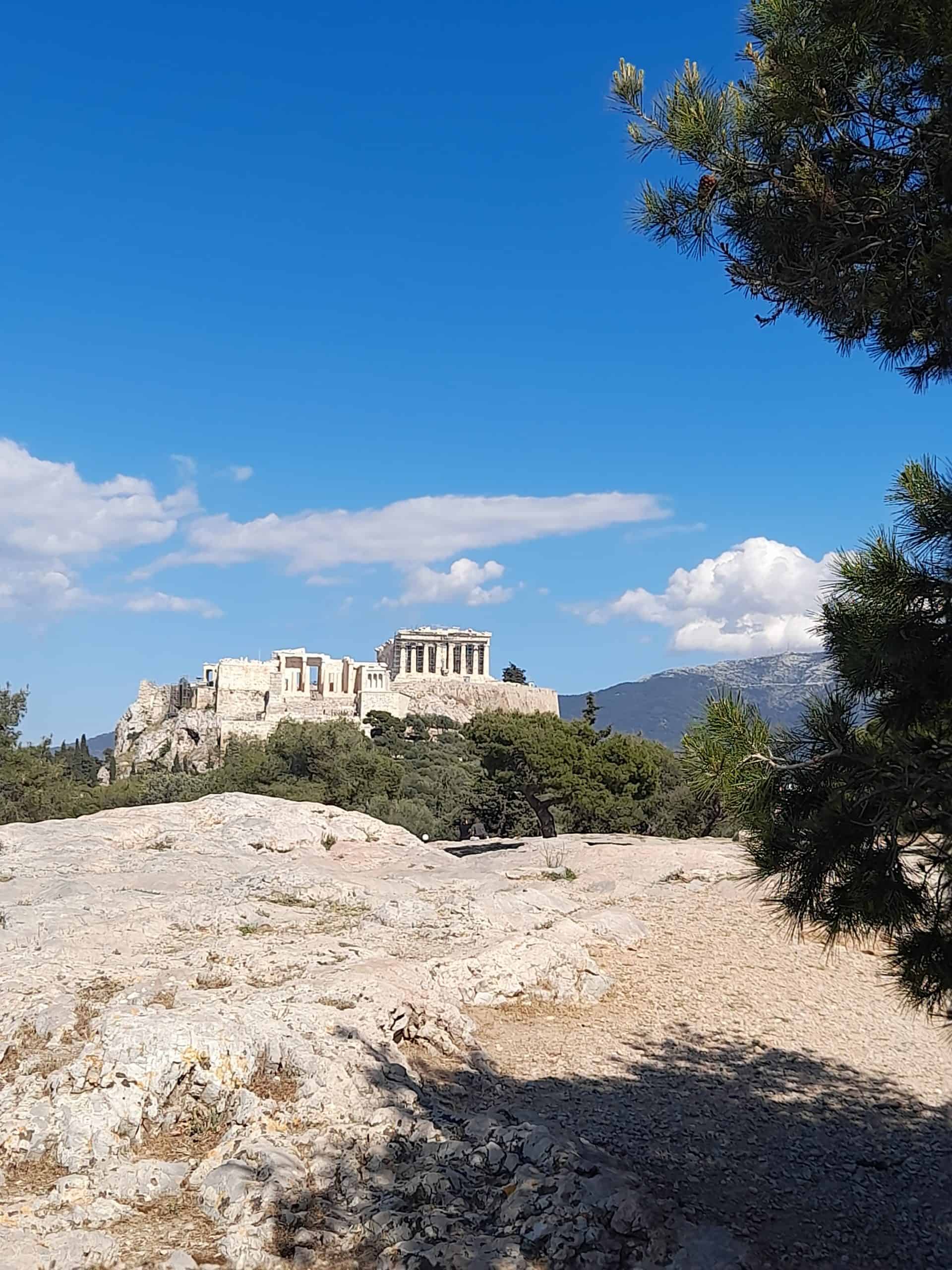
The Acropolis of Athens needs no introduction. This is arguably the most famous site in all of Greece and the first thing that springs to mind at the sheer mention of a trip to Athens.
You can see Acropolis Hill and its piece de resistance, the magnificent Parthenon, from virtually all corners of the city. The vision is especially spectacular at night when the site is illuminated by thousands of twinkling lights.
The Acropolis dates back to the 5th century BC and was built in dedication of Goddess Athena, the patron Goddess of Athens. Once upon a time, most Greek cities had an Acropolis.
However, most were built for defensive purposes whereas Athens’ purpose was religious. Several notable shrines, temples, and ancient theatres can be found throughout the Acropolis complex. You should dedicate at least 2-3 hours to your visit.
Mount Athos
The spectacular monasteries at Mount Athos comprise the largest monastic community in Europe. Athos occupies one of the three regions of Halkidiki and despite sitting within Greece, it is an autonomous state.
Mount Athos has been an Orthodox spiritual centre since 1054 and operated as an autonomous state since Byzantine times. Unfortunately, it is prohibited for women to visit the region.
Even male travellers will find it challenging to obtain a permit to visit. However, there are boat tours that depart from nearby Ouranoupoli during the summer months.
The boat sails around the Athos peninsula and allows you to see the monasteries from afar. It usually combines this with a trip to nearby Ammouliani island.
Mount Athos has been recognised as a world heritage site since 1988. The 20 monasteries here are currently occupied by around 1,400 monks that lead very simplistic lives.
Sanctuary of Asklepios at Epidaurus
The Sanctuary of Asklepios is a small shrine in the heart of the Peloponnese that is dedicated to the god of medicine. It was used for healing rituals and ceremonious medical practices.
Many regard the Epidaurus region as being the birthplace of modern medicine. People would travel from far and wide to have their afflictions and ailments cured at the Sanctuary of Asklepios.
The temple of Asklepios, the theatre, and the Tholos date back to the 6th century BC. The sanctuary was added to the list of UNESCO world heritage sites in Greece in 1988.
Today, Epidaurus hosts the annual Epidaurus festival every summer in Greece. This is a celebration of Greek culture and traditions through dances, theatre, and musical performances.
The festival takes place between May and October every year. If you attend a performance, it is worth tying it in with a visit to these Greece UNESCO sites.
Meteora
The Meteora monasteries are the second-largest Monastic community in Greece and Europe. They are second only to Mount Athos.
The name Meteora means ¨suspended in the air¨. This is a fitting title as these monasteries are perched atop mountains and clifftops.
Originally, there were 24 monasteries here. They were built by Greek monks between the 14th and 16th centuries.
However today, sadly only six remain. The interiors of the monasteries are just as spectacular as the exteriors and boast vibrant, colourful frescoes that depict various scenes from the bible.
The natural scenery here, and the sandstone peaks that encompass the monasteries, are just as impressive as the man-made structures themselves. It is for that reason that Meteora was recognised for both its culture and nature in 1988.
Paleochristian and Byzantine monuments of Thessaloniki
In 1988, the Paleochristian and Byzantine monuments of Thessaloniki were added to the Greece heritage sites list. Thessaloniki is Greece’s second city and is today recognised for its excellent restaurants and food scene.
The city was founded in 315BC and was one of the first places for the spread of Christianity. Today, there are many Christian and Byzantine monuments in the city, many of which are hidden away down unsuspecting residential streets or nestled behind the raucous bars of Ladadika.
So what specific sites appear on the list of Greece UNESCO sites in Thessaloniki? There are 15, as detailed below.
- City Walls
- Church of Acheiropoietos
- Church of St. Demetrios
- Latomou Monastery
- Church of St. Sophia
- Church of Panagia Chalkeon
- Rotunda of Saint George
- Church of St. Panteleimon
- Church of the Holy Apostles
- Blatades Monastery
- Church of St. Nicholas Orphanos
- Church of St. Catherine
- Church of Prophet Elijah
- Byzantine Bath
- Church of Christ Saviour
Medieval City of Rhodes
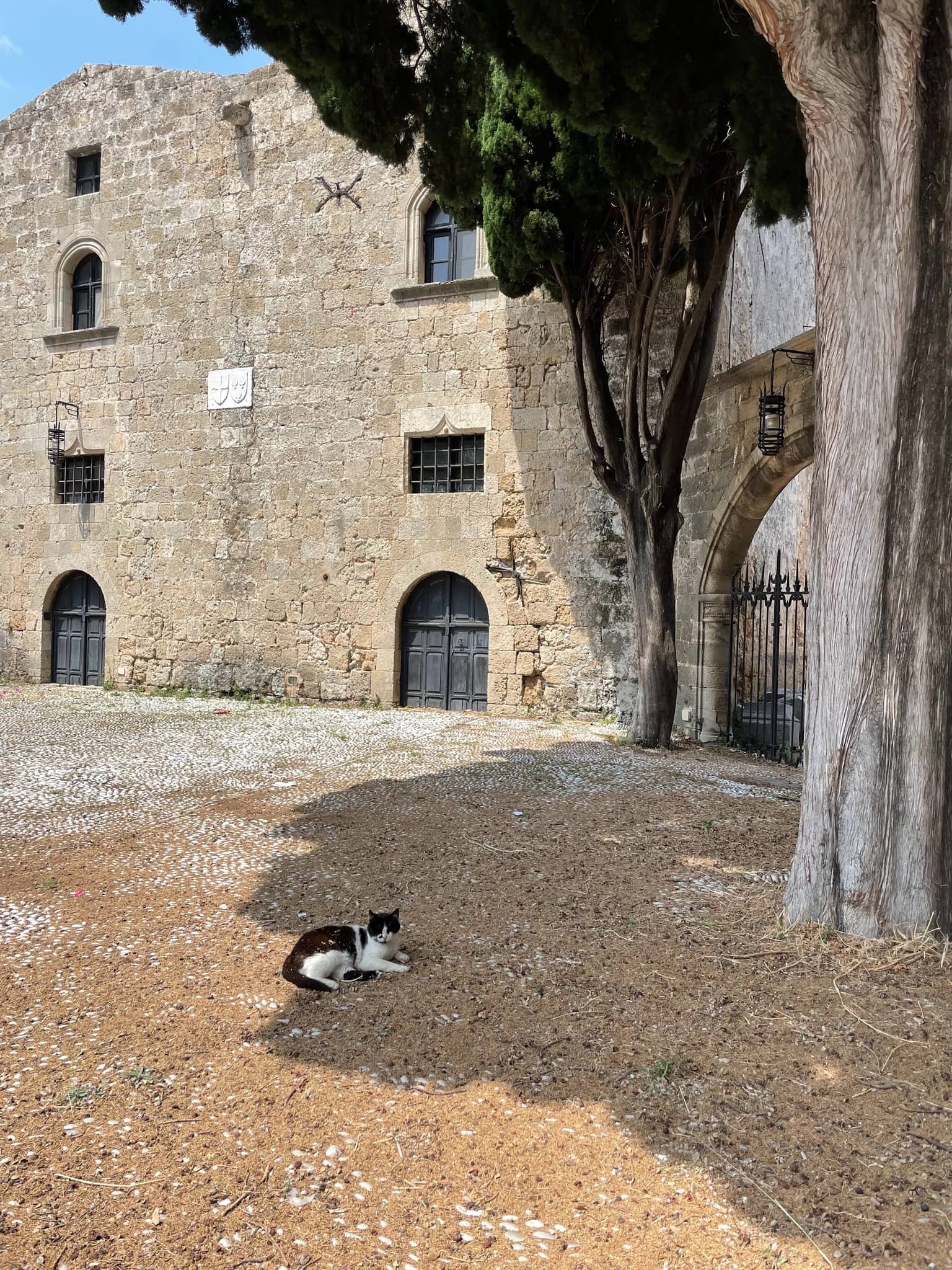
The ¨Old town¨ of Rhodes is a popular base and starting point for many people travelling through Rhodes and the Dodecanese. It has been a designated Greece UNESCO site since 1988.
A range of different civilisations has invaded and conquered the island over the centuries. Each has left its mark on Rhodes´ culture, gastronomy, and architecture.
The Palace of the Grand Master of the Knights of Rhodes, aka the ¨Kastello¨ is a magnificent medieval castle in the heart of old Rhodes. It dates back to the 7th century and is one of only a few examples of Gothic architecture in all of Greece.
What makes Rhodes city special is that it consists of a mishmash of architectural types. Here you will find Ottoman mosques and hammams nestled between buildings that reflect the Italian occupation of the city.
Mystras Archaeological Site
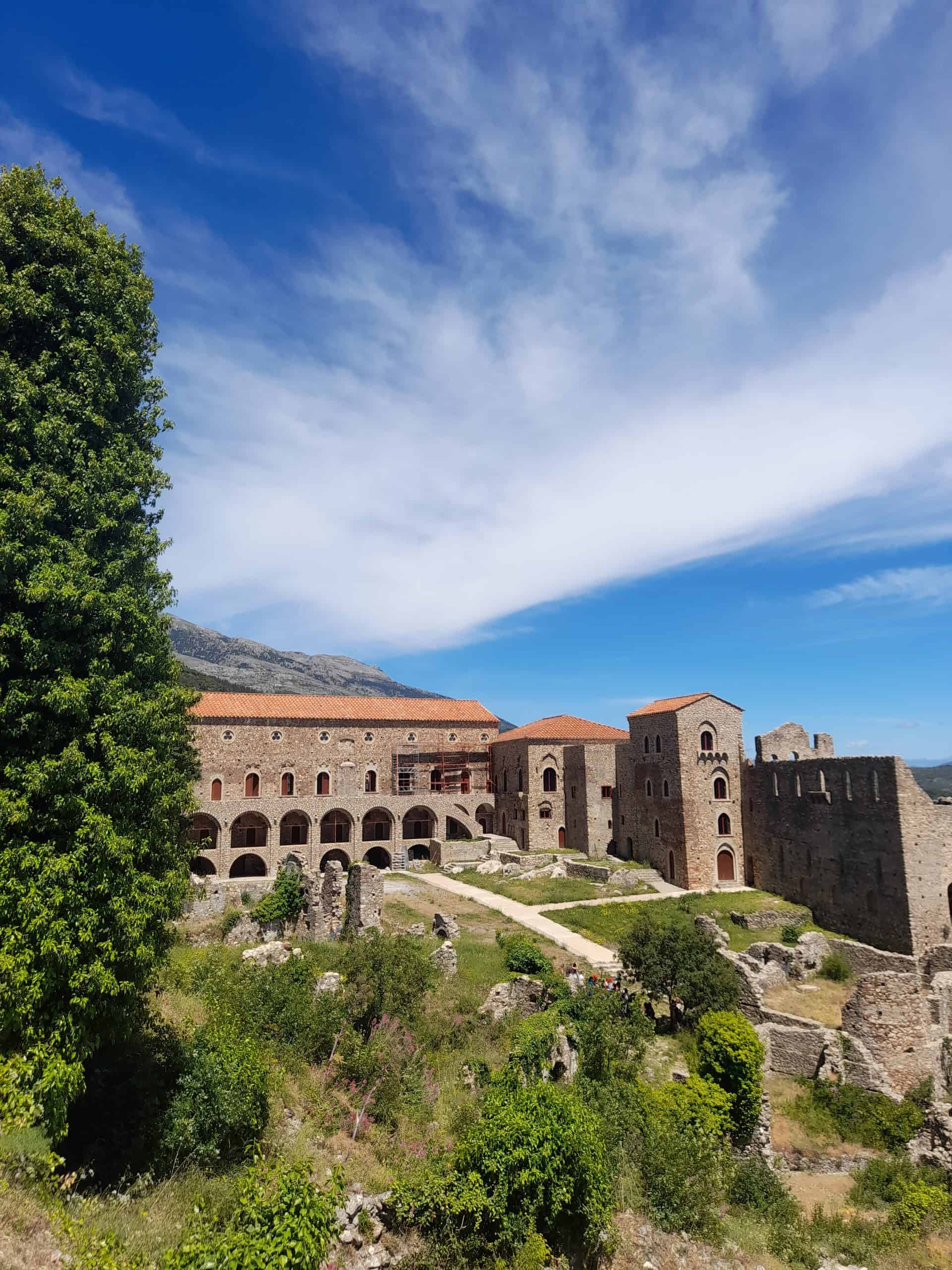
Mystras Greece is arguably one of the most underrated travel destinations in Greece. This old Byzantine settlement is simultaneously one of the most important medieval cities in Greece and one of the best-preserved.
Mystras lies in the Lakonia region of the Peloponnese, some 6km or so away from the ancient city of Sparta. It was added to the UNESCO world heritage sites Greece list in 1989.
The city was founded in 1249 by William II of Villehadouin. It was one of the most important settlements of the Byzantine Empire.
It was conquered by the Ottomans in 1640 and eventually abandoned in 1832. The site is vast and deserves a few hours of your time.
There are several notable buildings to look out for within the complex. Notably, Palataki Mansion was home of despots and the governor.
Pantanassa Monastery is the only religious building that still operates here. Several elderly nuns live inside.
Ancient Olympia Archaeological Site
The Archaeological site of Olympia, as the name suggests, was the birthplace of the Olympic Games. The very first games were hosted here between 776 BC to 393 AD and took place every four years.
However, for a period, they were lost in history and there was a hiatus of 1503 years before the next Olympic Games returned in 1896. At this time, they were hosted at the Panathenaic Stadium in Athens.
Ancient Olympia was recognised as one of the UNESCO sites in Greece in 1989. Its recognition is not only due to the areas sporting history but also due to the religious shrines and temples here dedicated to the worship of Zeus and the 12 Olympian Gods.
Delos Island
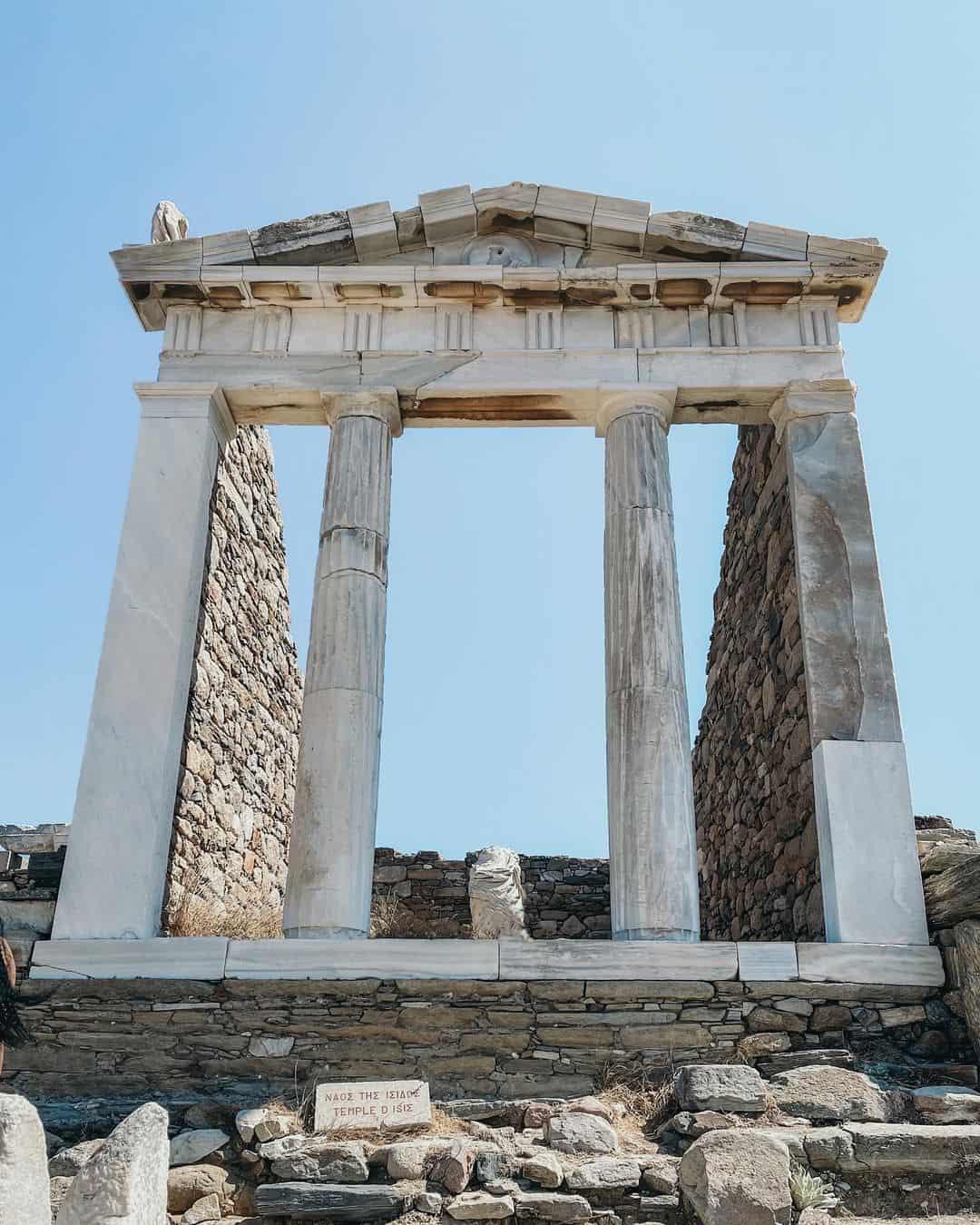
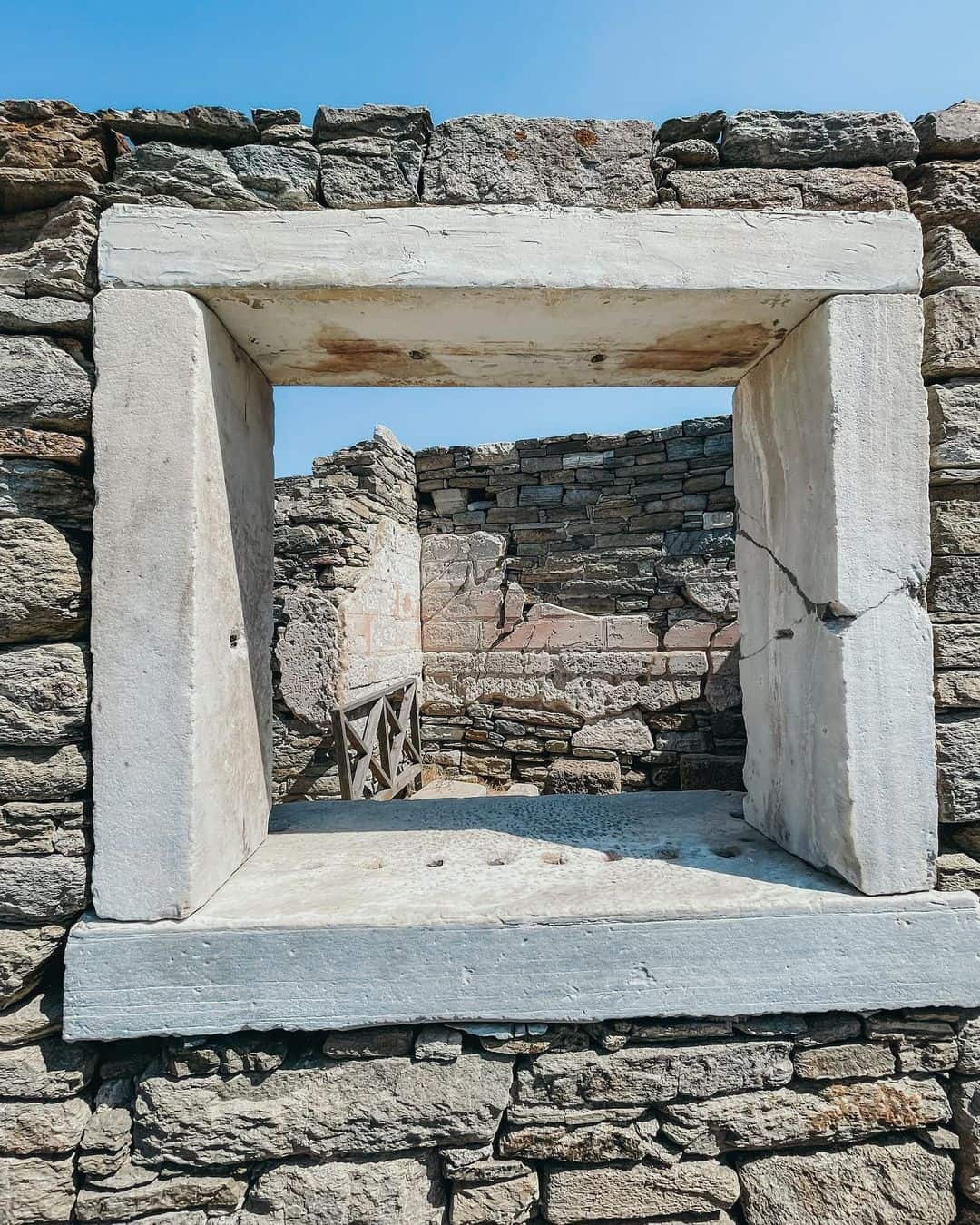
Delos island, in the heart of the Cyclades, is a Greek island like no other. Greek island hopping may conjure up images of paradisiacal beaches and idyllic blue and white buildings but Delos is something else entirely.
Legend has it that the Greek God Delos and Goddess Artemis were born here. From then, the island was deemed as being sacred ground.
No mortal was to ever be permitted to be born or die here. To this day, no one lives on this island, and it’s quite a mysterious place to explore.
You can take a day trip to Delos from nearby Mykonos or Naxos. Mount Cynthe is the highest point of the island and boasts spectacular views across the Cyclades archipelago.
Delos was recognised as a UNESCO world heritage site in 1990. Excavations here started in 1872 and are still in progress.
During the process, archaeologists have unearthed the sanctuary and many cosmopolitan Hellenistic townhouses. It is exciting to consider what else potentially awaits beneath the surface.
Monasteries of Daphni, Hosios Loukas, and Nea Moni of Chios
The Monasteries of Daphni, Hosios Loukas, and Nea Moni of Chios may seem like an odd grouping as they are not located anywhere near each other. For instance, Daphni Monastery is situated in Athens just past Peristeri and Haidari.
Meanwhile, Hosios Loukas is found close to Delphi and Nea Moni is found close to Chios. However, all three monasteries possess the same characteristics, belong to the same construction series, and are considered masterpieces of Byzantine art.
It is for that reason that they were added to the list of Greece UNESCO sites in 1990. If you are interested, you could visit Daphni Monastery while in Athens. A cab here from Syntagma Square will cost just a few euros.
Pythagoreion and Heraion of Samos
Samos is a gorgeous Greek island situated in Northeastern Aegean. It is often overlooked by visitors to Greece, perhaps because it is rather awkward to get to.
Samos is actually closer to Turkey than it is to mainland Greece. In the northeastern part of the city, you can find the fortified ancient city of Pythagoreion and the ancient Temple of Hera.
These are the main draw of visiting the island for many history buffs. They are also UNESCO protected and were first recognised in 1992.
Many notable Greek philosophers and intellectuals hail from Samos. These include the Philosopher Pythagoras, creator of the famed Pythagoras theorem.
Archaeological Site of Aigai (Vergina)
Aigai was the first capital of the Ancient Kingdom of Macedon. Today, this area is known as Vergina.
Aigai´s historic sites and surroundings are a popular day trip from Thessaloniki and can be reached by just a few hours of travel. The most important attractions here are the Royal tombs – which include the final resting place of Philip II, the father of Alexander the Great.
Similarly, the Palace of Aigai boasts gorgeous mosaics and frescoes. Aigai was recognised by UNESCO for its cultural significance and added to the list of Greece UNESCO sites in 1996.
The archaeological site of Mycenae and Tiryns
1999 saw the Archaeological site of Mycenae and Tiryns added to the list of Greece’s world heritage sites. These two ruined cities are situated in the Northeastern Peloponnese and are considered as being two of the most important Mycenaean civilisations.
They can be easily accessed on a day trip from Athens. This is particularly true of Mycenae, as many tour companies offer excursions to Nafplio, Mycenae, and Epidaurus in one day.
Mycenae awaits in the barren foothills of Mount Agios Ilias. Many parts of the ancient city are very well preserved today. This includes the old amphitheater, the lion gate, and the treasury of Atreus (a royal tomb).
The Chora (Patmos Island)
The capital of most Greek islands is known as ¨the Chora¨ and the same is true of the capital of Patmos. The Chora exudes the postcard-perfect scenery of a Greek island that you would expect – cobbled streets and quaint whitewashed buildings that cascade down hilltops.
But the town is also of religious significance. Patmos is said to be where St John the Theologian wrote both his Gospel and the Apocalypse.
The Monastery of Saint-John was founded in the 10th century and has been a popular pilgrimage route for devout followers of the Orthodox faith ever since. The historic centre was added to the Greece UNESCO sites list in 1999.
Corfu (Kerkyra) Old Town
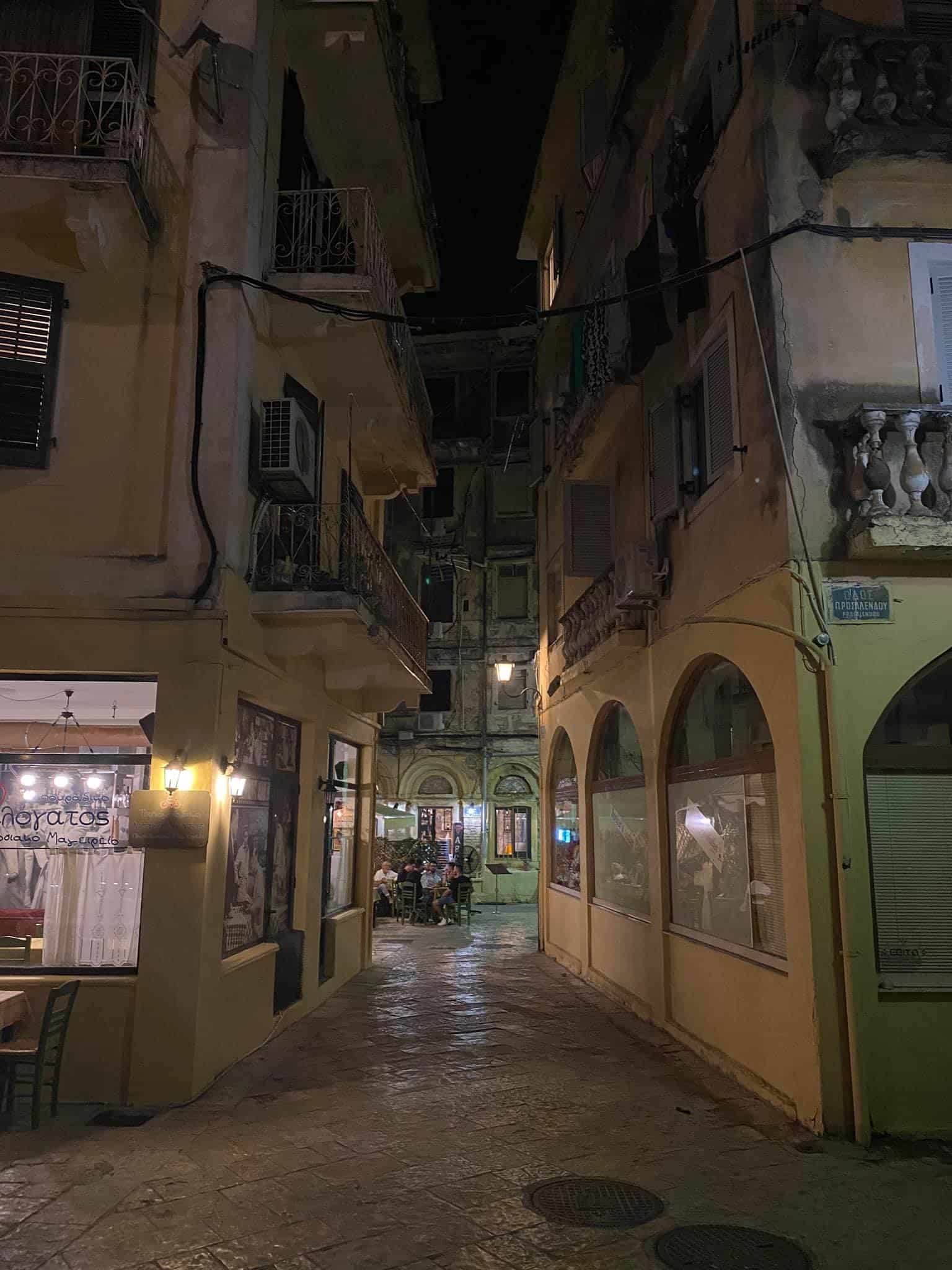
The narrow winding streets of Corfu’s old town are more reminiscent of something that you would expect to see in Italy than on a Greek island. This is for good reason.
Corfu was ruled by Venetians for centuries. They constructed three defensive fortresses to defend against the Ottoman Empire.
Today, wandering around Corfu’s old town feels like a journey back in time. The town was recognised as a UNESCO world heritage site in 2007.
Tentative UNESCO World Heritage Sites in Greece
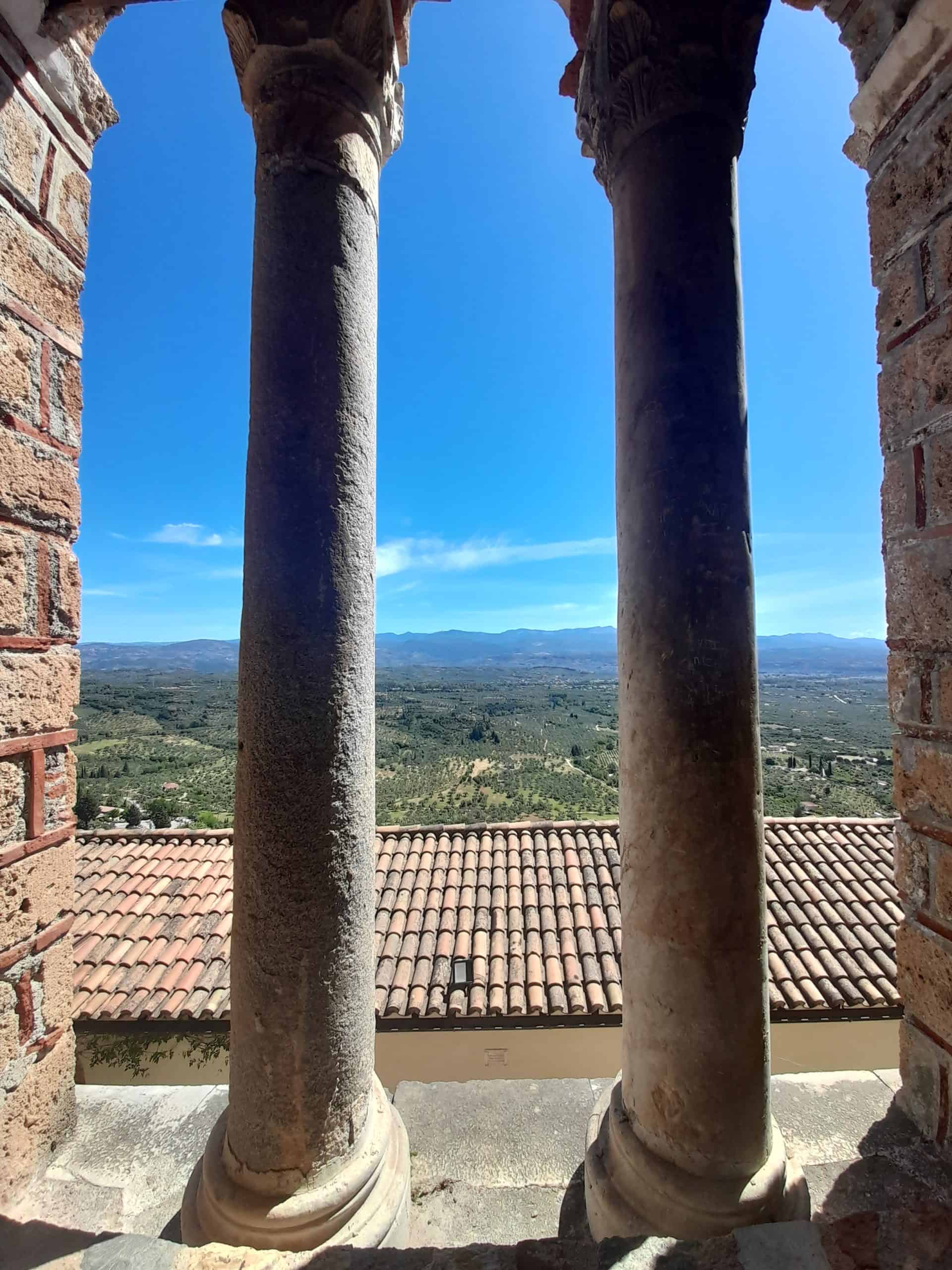
Is this list of UNESCO world heritage sites in Greece subject to change in the future? Potentially yes.
The Archaeological Site of Philippi was the most recent site to be added to the list in 2016 – decades after the first site was recognised. It only makes sense that in the coming years and decades, more locations in Greece are recognised for their historic and cultural significance.
Indeed, a number of locations are currently sitting on the UN´s UNESCO list. Namely, these are as followed:
- Ancient Lavrion
- Petrified forest of Lesvos
- Archaeological sites of Ancient Messene
- Late Medieval Bastioned Fortifications
- National Park of Dadia – Lefkimi – Souflion
- Minoan Palaces of Knossos, Phaistos, Malia, Zakros, and Kydonia
- The archaeological site of Nikopolis
- Wider Mount Olympus region
- Prespes Lakes area: Megali and Mikri Prespa
- Samaria Gorge, Crete
- Spinalonga, Crete
- Zagorohoria
- Ancient Greek Theatres
- Ancient Towers of the Aegean
